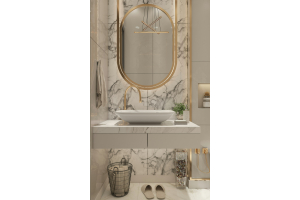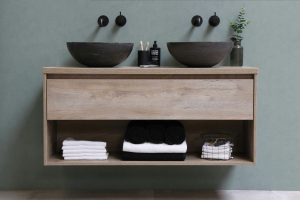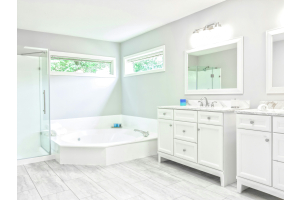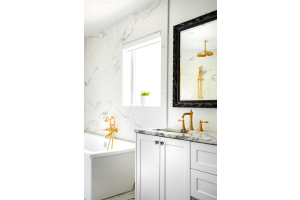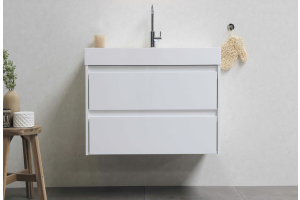If you are a homeowner searching for something that can help give more character to the spaces in your house, then wooden panels are a great choice. However, installing such decorative features in your bathroom can cause some concerns, as adding wooden wall paneling in this room comes with its own set of requirements.
Bathrooms tend to be some of the most challenging rooms in a home to decorate, and one of the questions that come to people’s minds is whether or not wooden panels are ideal for a bathroom setting.
What Makes a Bathroom Different From Other Rooms
There are several key environmental differences between your bathroom and the other rooms in your home. For starters, there’s the water that gets splashed all over from the sink, shower, and toilet. No other room in a house, not even the kitchen, is likely to have as much water splashed on the floors and walls as your bathroom. This is even truer if you have children in the house or are the kind of person who enjoys taking long baths.
Other major differences are humidity and moisture levels. For instance, your bath or shower can emit clouds of steam into the space, and damp towels are often left out to dry on bathroom hooks. High humidity provides the right conditions for the growth of microbes, mildew, and mold, all of which can be hazardous to your health and cause damage to decorative wall paneling.
Placement of Paneling on a Bathroom Wall
When you want to install wood paneling on a bathroom wall, where you decide to place it will always be an important decorating decision. This is because you must keep it away from moisture–consider combining paneling with tiles, which will still make the place look great, but could prevent your paneling from getting excessively wet.
Factor in Humidity
Before you install any wood paneling in your bathroom, you should start by checking the humidity levels in the space. Once you know what they are, you will better understand how to proceed with the project. You could invest in a hygrometer or have your contractor bring one to accurately measure the humidity levels in your bathroom.
You can also purchase a simple dehumidifier or an extractor if the humidity levels in the bathroom are high enough to harm your wood paneling–this is especially important if there is no window in the bathroom. Once you’ve determined your bathroom humidity levels, you can proceed with installation without the fear of your wood panels getting damaged.
Choose the Right Kind of Wood
In addition to finding ways to control the humidity levels in your bathroom, it is also important that you choose the right kind of wood before you begin a project to add paneling to your bathroom walls. You cannot go wrong with hardwoods, as they fare better in bathrooms than their softwood counterparts. One of the reasons for this is that it is more difficult for water to penetrate the closely packed grain of a hardwood.
Another good option is medium-density fiberwood (MDF). MDF is a reliable material and you can give it a layer of extra protection by adding sealant.
In Summary
Most people forget that when it comes to bathroom wall paneling, materials such as tiles, regardless of how durable they may be, can often be cold and don’t provide any insulation. On the other hand, wood paneling offers more than just decorative features in terms of insulation and texture, and installing it in your bathroom can give the space that bit of character you’ve been looking for.
Curious about how to decorate wood paneling without painting or the prices of wood paneling? We’ve got you covered–take a look at our latest posts.

